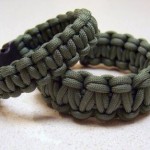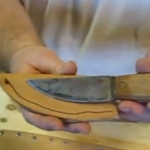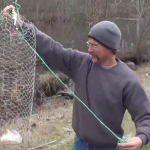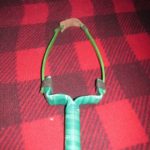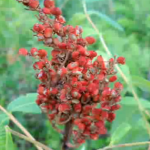
Prescription bottle caps are the perfect size and design for improvised ant bait traps. All you need to do is make a couple of modifications, use the right bait and place them in the right location. Take a look at the following steps and see how this can be a safe and effective way to get a handle on ant problems.
Items Needed

Preparing the Caps

You will need two sets of caps for each trap. You want a larger cap that will act as a shield and keep the bait protected from the elements. The smaller cap will be used to contain the bait. The first step is to take a 1/8 inch drill bit and drill a hole through the center of both of the caps. You can also use a hammer and nail.
Next, you want to start cutting out little notches around the side wall of the cap. There are lots of prescription bottles that already have notches in place and these will work just fine. If you are working with caps without notches, you can make them yourself by anchoring the caps into a vise and hammering or drilling pilot holes around the edges. You can make them like little mousetrap holes along the bottom edge, or drill holes along the top of the walls as well.
In either case, just make sure that the holes are big enough for the ants to get through and escape with the bait. Create about six holes that are spaced equally around the larger cap and four to five around the smaller one.

The next step is to apply a piece of masking tape across the underside of the hole in the small cap. This will prevent the bait from leeching out after the trap is assembled and set. You may also want to consider taking a piece of sandpaper and rubbing away any lettering that is stamped on the outside of the larger cap. This is a great way to ensure that someone won’t accidentally think that it’s a normal prescription bottle cap and come into contact with the poisonous bait.
Assembling the Caps

Take a nail that’s about 1 ½ inches long and stick it through the hole in the top cap. Make sure the cap is facing down. Invert the bottom cap and press the nail through that hole as well. Squeeze the two caps together and you now have a self-contained trap with a piece of nail sticking out. When you place this trap outside, you can use the nail to anchor it into the ground near to where the ants are traveling or have their nest.

If you want a flat end instead of the nail sticking through, simply file it off and add some sticky paper adhesive. This will allow you to set the trap and cover any barbed edges that remain from the cut nail. You can then attach the trap to walls, baseboards or any other surface as long as the tape wont cause damage. You can also simply seal off the nail with a piece of masking tape and let the trap rest freely on the surface as well.
Filling the Traps

All you need to do is to apply the bait to the smaller cap. Separate the caps, invert and place the smaller one on the surface before carefully adding the bait or poison of your choice. Press the larger cap and nail over the top and through the hole until both caps are securely attached. Now all you have to do is just wait for the ants to take the bait. Periodically check the bait levels and refill as necessary until your ant problem is dealt with.

Nothing could be easier, and this little trick can help you to pinpoint and target ant problems while making good use of items around the house. Try it for yourself and see how this can be a very cost-effective and powerful way to control persistent ant problems. You can also research some homemade ant poisons that may be less toxic and cheaper than store-bought options as well. In both cases, make sure that you have a supply on hand to deal with ant problems during a survival situation when other resources may be scarce.




